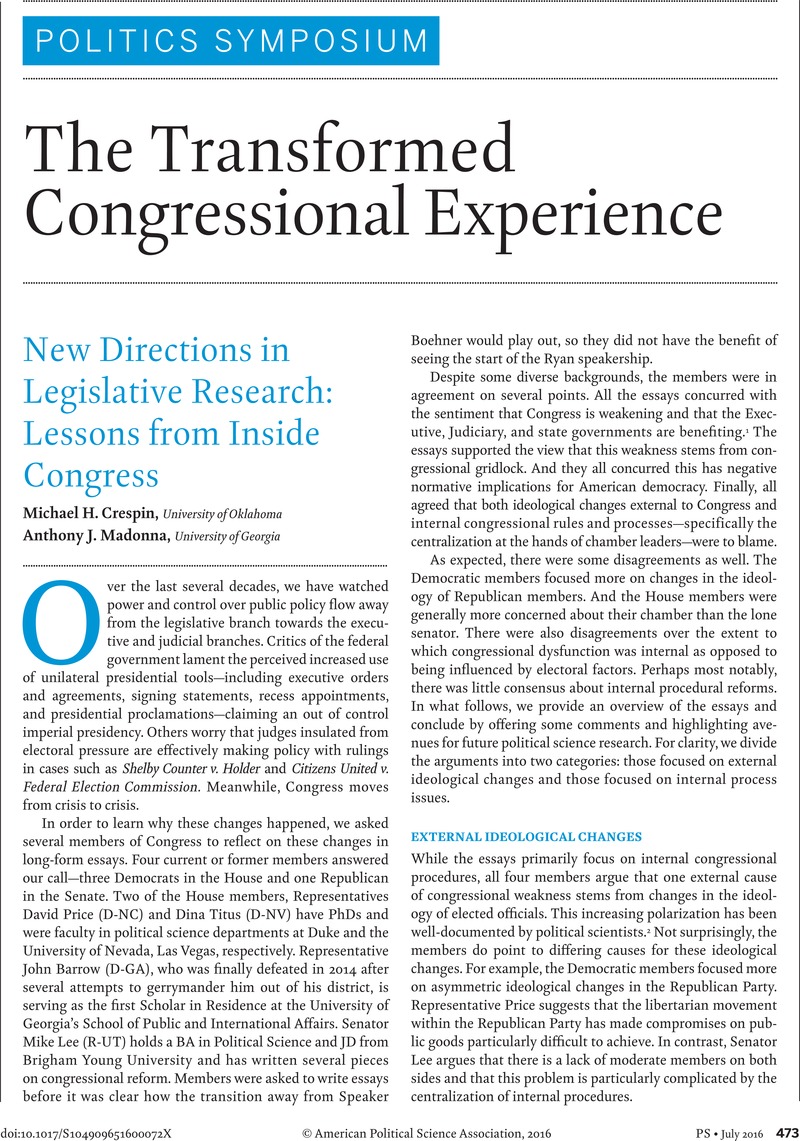Crossref Citations
This article has been cited by the following publications. This list is generated based on data provided by Crossref.
Curry, James M.
2019.
Knowledge, Expertise, and Committee Power in the Contemporary Congress.
Legislative Studies Quarterly,
Vol. 44,
Issue. 2,
p.
203.
Curry, James M.
and
Lee, Frances E.
2020.
What Is Regular Order Worth? Partisan Lawmaking and Congressional Processes.
The Journal of Politics,
Vol. 82,
Issue. 2,
p.
627.



